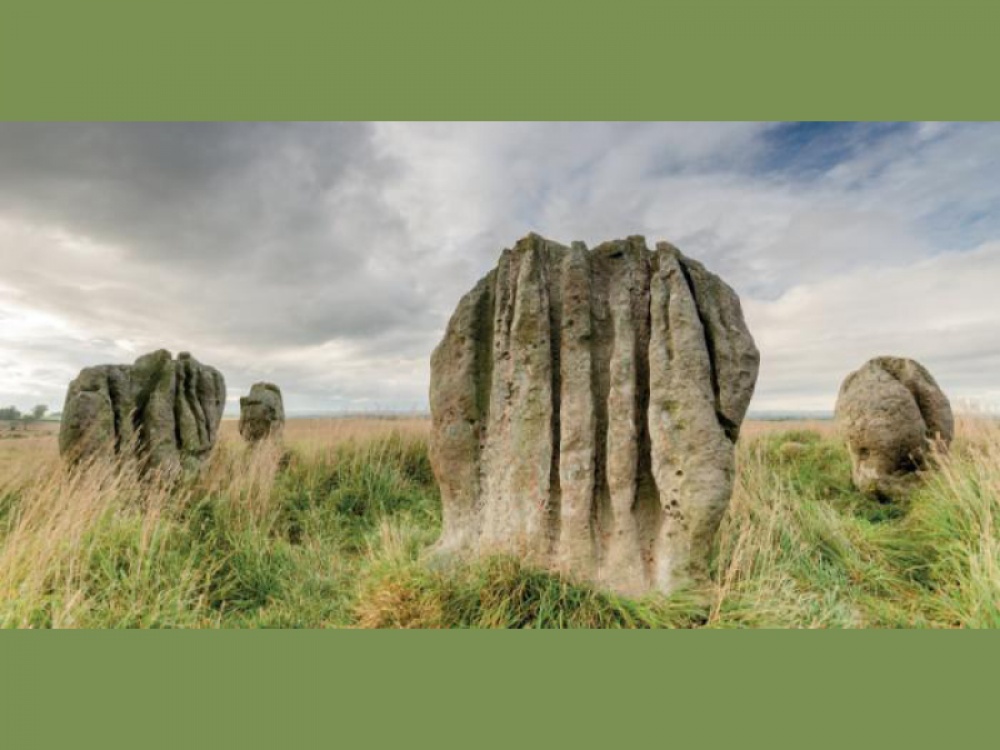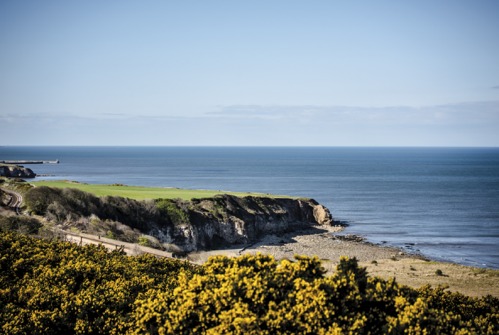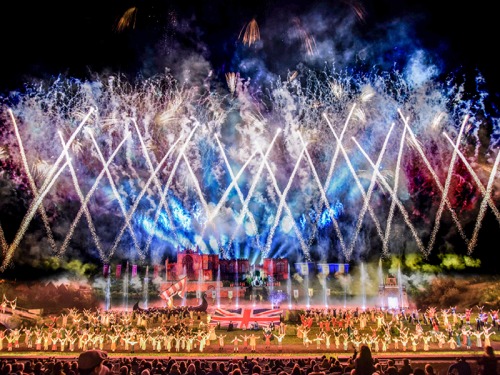Durham University’s Department of Archaeology Project

The North East enjoys a rich and vast religious history, but while there have been plenty of smaller projects focusing on individual sites, time periods, and religions, never before has a project as comprehensive as this one been attempted. With a grant from the Heritage Fund, Durham University’s world-leading Department of Archaeology will head up the Belief in the North East project alongside a veritable army of volunteers from local communities, in order to explore the heritage of religion from pre-history to present day across Teesside, County Durham, Northumberland and Tyne and Wear.
‘Within the department we’ve always been involved in the community, working on projects with local archaeologists and archaeology enthusiasts,’ explains Dr David Petts, Senior Lecturer in the Archaeology of Northern England, who also convenes the department’s North-East England Research Group. ‘With this more ambitious project, we’re going to have a series of six fieldwork projects right across the region, providing plenty of opportunities for people to get involved.
‘That’s the core of it, but we’re also going to have a series of survey projects where we’ll get people to go out across the region and collect data about standing monuments, rather than digging,’ he continues. Armed with information from the leaders of the project, volunteers will head out into the hills and countryside of all corners of the North East in search of relics like standing stones, holy wells and stone crosses.
The North East is packed with such relics, from St Cuthbert’s Cross in Alnmouth to monastic remains in County Durham, so it’s difficult for experts to keep up to date on the condition of them all. The volunteers will be provided with training in technical and traditional heritage skills such as excavation, 3D imaging and building survey, all of which will allow them to curate a thorough and up to date record of the North East’s religious heritage.
‘Technology has developed so much now,’ says David. ‘Nowadays it’s easy to go out into the field and use a digital camera to take photos and create virtual 3D models of what these things actually used to look like, and then compare them side by side on a computer screen and see them in all their three-dimensional glory. Things like drones are a lot cheaper and everyone has a laptop and a camera now, so these techniques are available for anyone to use, with a bit of training and advice.’
If this sounds out of your comfort zone, it’s supposed to. The team are keen to reach members of the community who never imagined they could get involved with archaeological fieldwork. ‘People might have watched a bit of Time Team or visited an English Heritage site, but they might never have thought they could actually get involved,’ explains David. ‘We fully expect that all of our volunteers will have never been on the sharp end of a trowel, but we will train them – that’s one of the points of the project.’
Read More: Yorkshire's Leading Farm Shops
The team are aiming for the project to be accessible to all. Some of the training will be classroom-based, in Durham initially, but there are plans to expand to more locations across the North East as the project progresses. ‘We’ve got amazing historical archives in Durham so we’re going to show people how to use them properly, because they can be a bit intimidating if you’ve never used one,’ says David. ‘We know not everyone is going to be able to pull on a pair of walking boots and clamber halfway up the Cheviots, so those people might be better suited to doing map or place-name research.’
Of course, there will be plenty of opportunity for clambering over hills too. ‘Lots of it will inevitably be practical work; you can’t teach someone how to survey a standing stone unless you’re out in the field with a standing stone in front of you,’ laughs David.
As the project is collecting data from prehistory to present day, they’re looking at everything from neolithic rock art and Bronze Age burial mounds, to medieval and post-medieval monastic granges, and even ‘graffiti’ in churches. The North East is littered with rock art and standing stones, and while their precise meaning isn’t known, the standing stones have an undeniable allure and certainly played a part in rituals dating roughly between 4000 and 1500 BC.
‘People in the know do know about the rock art and stones, but there are an awful lot of people who don’t,’ says David. ‘The North East has stuff that rivals anything else in the country. Some of the finest examples of rock art around can be found in places like Roughting Linn up in Northumberland.’
Roughting Linn, named after the nearby waterfall, is the largest decorated rock in the North, with ‘cup and ring’ carvings, as well as concentric arcs and some figures. Other spectacular sites for rock art include Lordenshaws, Doddington Moor, and the hills near Wooler. A tough traipse through the hills will be worth it when you come across the Neolithic markings, many of which are still clear to see – despite being truly ancient. Although they have been recorded by past volunteers, the sites of the rock art still are still poorly understood in terms of chronology and function, and archaeologists wish to better understand Neolithic ‘religion’ in contrast to other aspects of Neolithic life.
Standing stones are another intriguing yet poorly understood aspect of the Neolithic and Early Bronze Age periods. Some of the region’s most famous standing stones can be found at Kirknewton (the Yeavering ‘Battle Stone’) and Duddo, where a Bronze Age stone circle stands, while Harbottle’s Drake Stone is the subject of folklore – thought to possess mystical healing properties. It is hoped that once the results of the volunteer surveys are in, one or two sites will be selected for further analysis in an attempt to unravel the mysteries of these ritual monuments.
Read More: Amanda Owen on Her Life as a Shepherdess in Yorkshire
Similar superstitions abound around the holy wells, as people continue to throw coins (the modern-day equivalent of hat pins, which were much more common in the past) into the ones that haven’t run dry. Although they’re usually associated with Christianity, they may have origins in pre-Christian religious activities, as ‘wet places’ are known to be associated with religious activity in Roman (and even pre-Roman) times. This project will be the first formal survey of possible and probable holy wells in the North East of England.
Moving through time to the Anglo Saxon period, the team are planning to investigate an early medieval cemetery, the exact location of which is being kept under wraps for now to ensure its preservation. Further along in time again, the team will be looking at two monastic granges: one in Bearpark, Durham, and one in Billingham, where monks would have gone to escape the hustle and bustle of the city.
But David is also eager to address the North East’s more recent cultural and religious heritage. ‘Another part of the programme is visits and field trips,’ says David. ‘I’m hoping to take people to see mosques, synagogues and Sikh temples, as they’re all part of the recent heritage of the region but these traditions might not be as well known as they are in other parts of the country.’
Such trips might include visits to the mosque on Laygate in South Shields (which played host to legendary American boxer Muhammed Ali in 1977), where the Muslim community dates back to the early 1900s (when Yemeni sailors arrived into port due to the region’s excellent sea-going and international trading links). ‘There are also things like 19th century Jewish cemeteries which aren’t very well known, so they’re not on people’s horizons as part of their history,’ explains David. ‘We’re keen to rescue this stuff for posterity to show that they’re all part of the story of the North East.’
Such an ambitious project will obviously take time, and David estimates that it will run until summer 2021, at which point they hope to gather all the new data collected and launch a travelling exhibition around the region. Local archaeological offices around the North East will be able to update their records with all of the new information collected by the project’s volunteers, and members of the public will have gained invaluable new skills.
‘We’re really keen for the people we train to take those skills and use them in their own work,’ concludes David. ‘I would love to see lots of little projects evolving out of this group, carrying on the work that we started – that would be the real sign of success for us.’
To find out more about Belief in the North East and volunteering opportunities, visit www.beliefne.net






